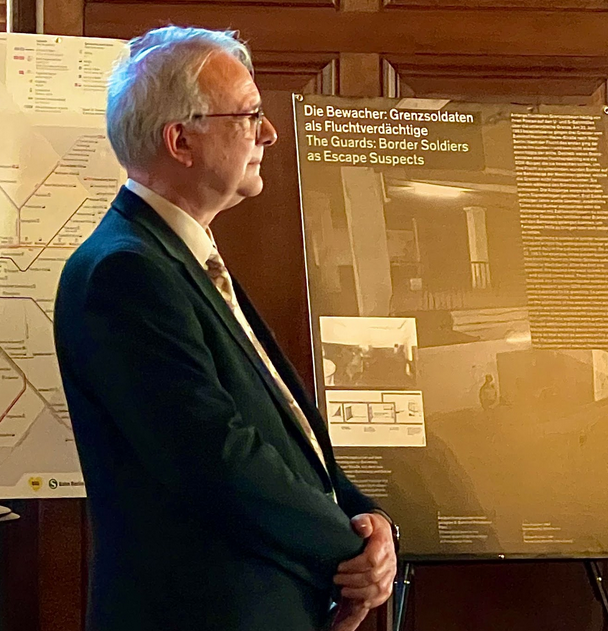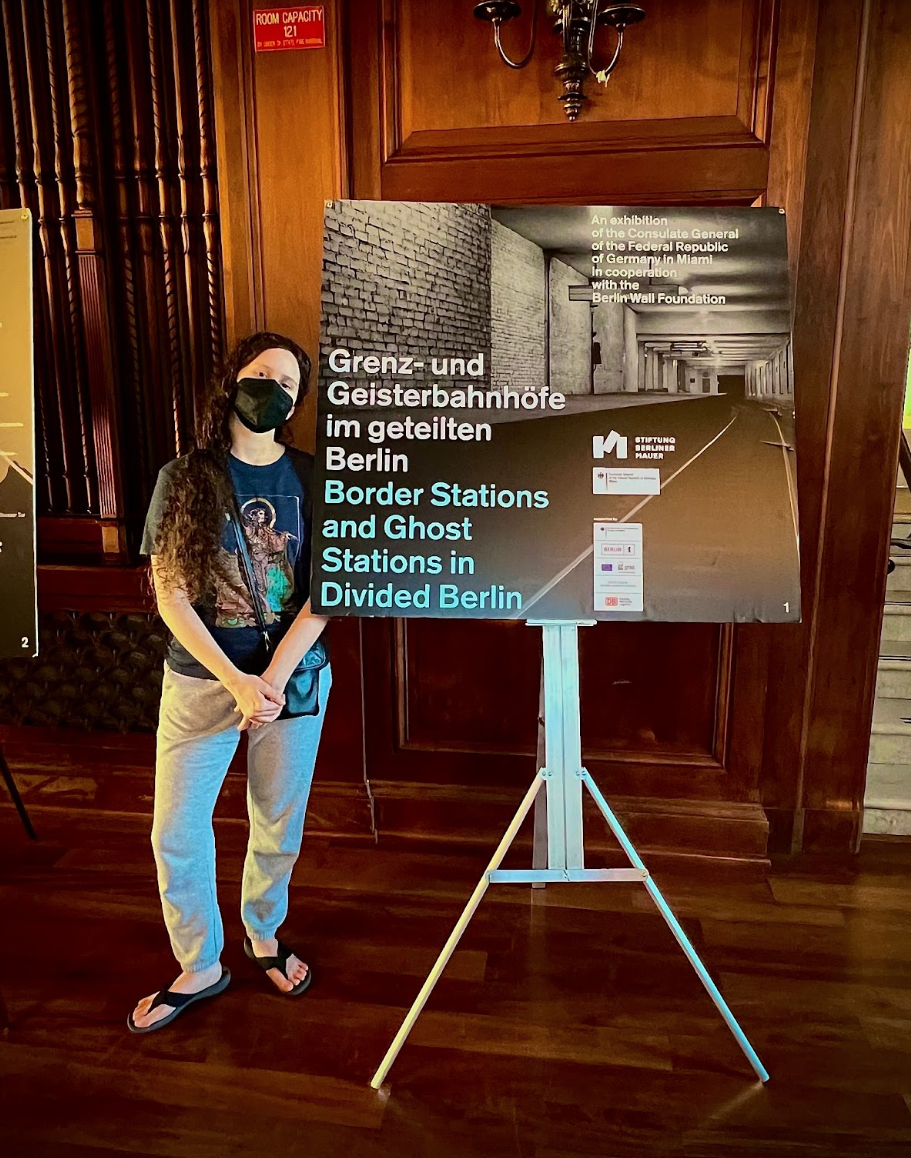Imagine going to bed and waking up to a world divided by a wall that seemingly sprung up overnight. Aug. 13, 1961: the communist German Democratic Republic (GDR) began the construction of a wall separating East and West Berlin. With the Berlin Wall playing such a large role in modern history, the New College German Department has introduced a brand new exhibit to the community titled, “Border Stations and Ghost Stations in Divided Berlin.”
Along with the exhibit, which will be housed in the Jane Bancroft Cook Library until Feb. 7, students were given the opportunity to attend a lecture by the Consul General of Germany, Andreas Siegel. On Jan. 25, an informal event took place in College Hall where attendees were encouraged to ask questions and provided an open and intricate academic discussion of the experience of living through the fall of the Berlin Wall.
“The official purpose of this Berlin Wall was to keep so-called Western ‘fascists’ from entering East Germany and undermining the socialist state,” History.com states.
The Berlin Wall fell on Nov. 9, 1989 when it was announced that citizens of the GDR were finally granted permission to travel across the borders again. Many people took to graffitiing and chipping away at the remains of the wall, and to this day, it remains a powerful reminder of the history of post-war Germany.
In the final moments of World War II, conferences were held at Yalta and Potsdam to discuss what post-war Europe would look like. U.S. President Franklin D. Roosevelt, British Prime Minister Winston Churchill and Joseph Stalin gathered near Yalta, Crimea to discuss the reorganization of territories. After extensive discussion and discourse between the leaders, it was decided that Germany and Berlin would be divided into zones controlled by the United States, Great Britain, France and the Soviet Union. Germany was split into four “allied occupation zones.” The Eastern part of Germany, the GDR, was given to the Soviet Union while the rest was split between the U.S., Great Britain and France. In 1945, both the Soviet Union and the United States had begun to emerge as “global superpowers.” Due to their drastically opposing ideologies, tensions began to grow and Germany became an important political pawn in Cold War politics. With this, the divisions of East and West Germany became even more pronounced than ever before.

The exhibit also goes hand in hand with the Berlin Independent Study Project (ISP), which gave 16 students the opportunity to visit, explore and live in Berlin for the month of January. At this event, students were given a chance to speak about their experiences within the city as well as the history they observed.
“It was an amazing experience that really broadened my horizons in a way that I couldn’t achieve just staying home,” second-year Rachel Roeder said, who attended the trip. “Germany has such a long history compared to America, because we are still a relatively new country.”
Although Roeder is pursuing a Creative Writing Area of Concentration (AOC), over the course of her trip to Berlin, she studied the different architecture around the city and how the contrasting build styles represent the history of the city in subtle ways throughout daily life. On the Berlin ISP trip, students got to experience the history of the wall through an exhibit and walk along the path of where the wall once stood. She explained how you can tell where the city was separated even if it is in the minor details.
“It’s interesting because the Soviet architecture used lots of patterns and arches compared to the West which was almost reminiscent of Art Deco,” Roeder said. “I saw many churches too and although they share a similar base style, there are still those little differences that you can tell depending where you are.”
The ISP and exhibit could not have been made possible without the efforts of Professor of German and Film Alexandra Hagen, who was at the helm of the endeavor providing students with the resources they needed in order to have this once in a lifetime study abroad experience.

